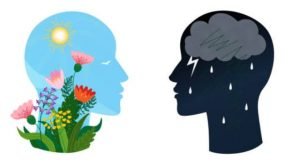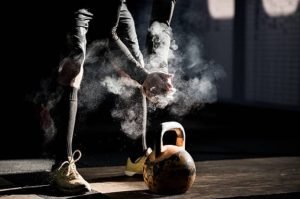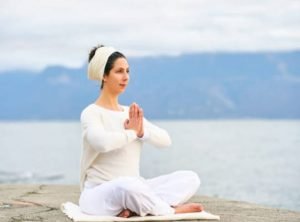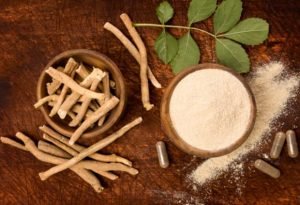
by admin | Jun 11, 2022 | General, Life
Stop Procrastinating Right Now and in the Future
We are all guilty of procrastination, and imagine how much more we could achieve if we stop. It is easier said than done. With numerous distractions around us, procrastination seems inevitable. The only way to overcome it is to practice time management.
But, before we see what you can do to stop procrastinating as soon as possible, let’s explain what procrastination is.
What is Procrastination?

In simple words, procrastination can be defined as the postponing of important tasks. Instead of doing what they should do, people who procrastinate spend their time doing trivial activities. For example, instead of finishing the report for your work, you lose track of time scrolling down the Instagram feed.
Sounds familiar?
Here is what you can do to overcome procrastination.
Find Out Which Tasks You Avoid Most Often
Procrastination is, to some point, avoiding discomfort. During a standard workday, you might not even be aware of your procrastination patterns. Therefore, try to identify which tasks you avoid the most. Are those online meetings, writing reports, doing calculations, or something else?
Once you discover the procrastination pattern, try to find a reason why you find those tasks uncomfortable. Some people are afraid that they will let other people down, so they procrastinate to avoid getting feedback. Others procrastinate because they find their tasks too boring. Some may feel like the tasks shouldn’t be part of their work.
Once you are aware of the patterns, you may come up with a solution. You may try to delegate, organize priorities differently or ask for help.
In some cases, these solutions might help you prevent procrastination in the first place.
Confront Your Procrastination
Do what makes you scary. It doesn’t get easier or simpler than that. For example, if you procrastinate because you don’t feel comfortable gathering up colleagues for a meeting, do that and do it despite your level of discomfort. You might discover that you can put up with more discomfort than you anticipated in the first place.
If it seems like too big of a step for you, take small steps. For example, call two colleagues at a time for a meeting. It will help you feel more productive, knowing that you have accomplished a small milestone.
Stay Consistent

Congratulations, you’ve done the first step toward overcoming procrastination. But, if you have been used to procrastination, you’ll easily slip out of your mood. You can start procrastinating again even in the middle of the tasks.
Therefore, come up with a set of solutions that will help build confidence and concentration. You can even divide tasks into small milestones and celebrate as you complete each one of them. Promise yourself a reward as an additional motivation to stay focused on important things.
Keep Distractions at Minimal
Put your phone away. Don’t drink or snack while you do your task. If you have anxiety over deadlines, remove the watches and focus only on things you have to complete.
Don’t sit anywhere near the TV while you work and close the office door to prevent yourself from staring at other people passing through the hall.
Practice Self-Forgiveness
Even if you slip into procrastination, don’t beat yourself for it. Also, forgive yourself for procrastination in the past. Self-love and care are the best motivation for success and the best tool.
During the process, tackle challenges as soon as they occur, and stay focused as long as possible. Over time, overcoming procrastination will come naturally to you, as you’ll discover how good you feel when you stop procrastinating. So, what are you waiting for? Go and complete at least one task you’ve been avoiding! Share the article with your friends to help them overcome procrastination.

by admin | Jun 11, 2022 | Health
Superfoods & Their Effect On Health
For many people, the term “superfoods” sounds like just another marketing gimmick to make you believe in an easy solution to a certain problem. In reality however, superfoods are products that are proven to have a certain net benefit for human health, meaning they are actually functional and beneficial.
With this article, we’ll provide you with the basic information you need to know about superfoods, as well as a list of our favorites!
What Is Health, Even?
It is likely that traditional medicine has made some of us believe that health is dependent on one thing. However, you have to realize that the body is a complex machine and so is its health. By definition, health can be defined as the proper, balanced functioning of all bodily systems, active tissues and processes.
The thing here is that health is AUTOMATIC … Your body takes care of it all! You don’t have to think about digesting and absorbing essential nutrients. You don’t have to think about feeling sleepy, hungry or thirsty. You don’t have to think about waking up in the morning. All of this is automatic and ALL you have to do is feed the body the right nutrients for it to be able to sustain the healthy functioning of all those systems and tissues.
Macro VS Micro Nutrients

Now, if you know a thing or two about healthy nutrition, you probably know the terms “macronutrients & micronutrients”. If not, here’s the short story – Macronutrients are protein, fats & carbohydrates and they provide the majority of the energy our bodies need, along with essential nutrients.
Think of the term “essential nutrient” as something that the body needs but can’t produce on its own. Contrary to macronutrients, we have micronutrients, which include vitamins, minerals and electrolytes. These nutrients don’t really have a caloric value, but are intricately involved in a variety of processes, meaning that most of them too, are essential.
THIS is where superfoods shine!
The 5 Best Superfoods
Granted, health isn’t dependent on consuming just one “superfood”, but these are the exact foods that can help reinforce your body’s overall health. So let’s have a look at the top-rated superfoods & drinks!
1. Green tea

Herbs and teas are known to have a variety of active ingredients that have different effects on the body and its processes. The right combination of herbs can treat a variety of issues, which is why herbs are a big part of traditional medicine in many countries. More specifically, green tea is a Chinese herb, rich in antioxidants, polyphenols and some caffeine! Looking to fight inflammation and maximize your mental focus and energy levels? Get yourself some green tea.
2. Ginger
Some of the most potent ingredients have the strongest smell and taste and granted, ginger is one of them! Ginger is a root, used in Chinese traditional medicine to create a variety of different home remedies, teas and even some food products! This root has a variety of antioxidants that too have the anti-inflammatory & antioxidative effect on the body.
Ginger shines when it is time to treat acute and chronic inflammations and can also be consumed regularly as means of prevention for cardiovascular diseases.
3. Forest Fruits
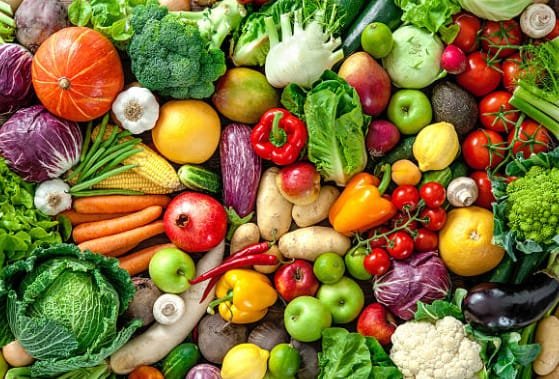
If there’s one food group that we could call “stacked with goods”, well that would definitely be forest fruits! These sweet fruits have a load of antioxidants which are proven to reinforce immunity and improve overall health. Blueberries, raspberries, goji berries and strawberries are amongst the best-tasting, most nourishing superfoods one can add to their nutrition plan!
Final Thoughts
If you’ve covered your main nutrient requirements coming from protein, fats and carbs, it is time to add some sides to your meals! Or better yet, have a nice afternoon cup of green tea with ginger in the shade… If you liked this article, stay tuned on our blog as we are releasing content like this on the regular basis!
See you soon!

by admin | Jun 10, 2022 | Health
what causes sadness | Fact or fiction | Seasonal Affective Disorder?
Have you ever felt gloomy, sad, and kind of depressed when the seasons change? Have you ever thought that there may be a reason for that? Seasonal Affective Disorder (SAD) is a type of depression that is related to the changing of the seasons.
This is the period between the beginning of autumn to the end of winter months for most people. If you’ve never experienced it, you probably know someone that has. It is one of the most common types of depression.
But is it an actual thing, or are people using it as an excuse?
Let’s talk about being SAD

In most cases, people fall under SAD’s umbrella from October to April, in other more minor cases from April to September. Though a rare occasion, some people even experience it all year long. So that brings up the question of authenticity to this so-called depression. Before that, let’s point out the symptoms, which in most cases are:
- Feeling depressed for most of the day
- Losing interest in activities that were fun before that
- Bad sleep
- Less energy
- Overall feeling of lethargy
It may seem that some of these are just excuses to procrastinate and blame the “winter blues” for not wanting to go out of bed.
But a further insight on the topic sheds a different light. Let’s just put it this way – In more severe cases, there are even worse symptoms, such as finding it hard to concentrate as well as having suicidal thoughts.
What can cause SAD
Although there is no medical or professional conclusion on the actual cause, there are different opinions.
Your biological clock, or circadian rhythm, may be involved. For example, the reduced sunlight in the autumn-winter months may interfere with a person’s biological clock. Lack of sunlight may also cause a drop in serotonin levels that may lead to depression. The changing of the seasons could affect the melatonin levels in the body that play a major role in sleep patterns and mood.
A couple of unpopular opinions
One of the less popular opinions on the matter is that SAD may run in the family. Family members that have struggled with it could pass it on to the next generations, especially if the mother has struggled with SAD throughout pregnancy.
Having a bipolar disease could possibly play a significant role in the development of SAD. Professionals don’t place their chips on this theory because bipolar disease is, by itself, a clinical type of depression disease. Last but not least, statistically, SAD occurs in people that live far from the equator. This may be because of the longer summer days and decreased sunlight during the winter.
How to treat it

Regardless of how severe your specific case is, the matter shouldn’t be taken lightly, and you are best off finding means of treating the SADness. Here are some of the best ways to do so: Light therapy is the most famous treatment for SAD. It’s a bright light that people get exposed to every day during the light-deprived months. A person sits in front of a big lit-up box that shines them with 10.000 lux every day for 30 – 45 minutes. It’s usually done early in the morning.
Psychotherapy, also known as Cognitive behavioral therapy or “talk therapy”, is a type of therapy that helps people to cope with difficult situations.
It is considered that this type of therapy is more efficient when it comes to long-term effects. This is because its main objectives are to maintain a sane and safe environment for the recipient and get him out of the house.
Medication is a commonly used practice when it comes to any type of depression. People are divided on whether pills are the way to go when struggling with any type of depressive ignited disease.
And the most obvious way to go – vitamin D. Nutritional supplements of the vitamins could help improve the symptoms. Although some specialists find it inefficient, especially compared to the other three options, it is still considered to be a way to go.
To Wrap It Up
Seasonal affective disorder, or SAD for short, is a type of depressive mood that occurs at the same time every year. It’s most common in people living above 30 degrees latitude north and south (i.e., North America).
The seasonal changes are the primary contributor to this phenomenon because with shorter days comes less sunlight which can cause an imbalance in your brain chemicals like serotonin. But don’t worry! There are things you can do to help alleviate these symptoms before they get worse.
Some helpful strategies include taking vitamins D3 and B12 daily, drinking more water throughout the day, eating healthy foods, and exercising regularly. However, remember that the most powerful tool to deal with this is to be cognitive about it!
You can consciously DECIDE to be stronger than your environment and that happens once you realize that you don’t HAVE TO follow the main sequence.
Stay happy.

by admin | Jun 10, 2022 | Mind
Financial Discipline – Money Spending Habits
As the saying goes, money isn’t everything, however, the absence of money can bring a lot of trouble. This is the exact reason why developing good financial discipline is essential for your long-term prosperity. Unless you’re a financial guru of some sort, odds are that you may find certain aspects of money management more difficult.
In this article, we’re going to pin-point the most important considerations, which can help you develop good financial discipline.
What Is Money, Even?

Before you get to work and manage your money (and eventually make it work for you), you have to understand what money actually is. Think about it, we all want to have millions, but which people actually have those millions?
People who are worth millions, plain and simple!
That is to say that money is nothing but a unified way to express the market value which an individual gives/receives to and from other people. Check out our 6 best tips below, that will help you re-think your finances and habits!
#1 Set The Excuses Aside
Many of us have poor financial discipline, because we refuse to accept it is true. You have to realize that just like anything else, developing financial discipline takes time and consistent effort. This implies that all excuses must be set aside and actions should be taken, according to the goal.
Ultimately, changing your spending habits and lifestyle may be crucial to achieving balance in your finances and work.
#2 Create A Plan
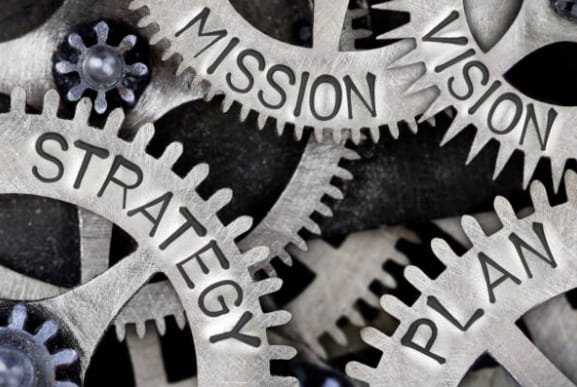
Now that you’ve started changing your money spending habits, it is time to create a plan of action. Analyze yourself and track down the non-essential things (like food) that take up most of your money.
If you’ve been spending recklessly on something you can live without, set a limit on it and come up with a reasonable monthly budget to fit everything in, starting from the most vital, to least important things.
#3 Think Twice!

In a world where social media knows you and your interests better than you know them yourself, it is quite easy to slip and go on a money-spending spree. But do we really NEED most of the things we spend a lot of money on? Well, in most cases… Not really.
In order to minimize non-essential purchases, try asking yourself these 3 questions, before checking out:
- Do I really need this and how am I going to use it?
- Is this important for me or am I just slipping?
- Did I need this before I saw it?
If you do this, you will undoubtedly have a greater chance of estimating whether or not this product you want is worth the money.
Don’t Forget, Though…
Developing good financial discipline doesn’t really mean depriving yourself of all the small treats and things you like. It is more about integrating those things into a healthy, monthly budget that also allows you to set money aside and have everything essential for your wellbeing.
Granted, if you take all the right steps towards that goal, you will set yourself up well in the long term and will be able to better manage your personal resources, which will in turn allow you to achieve and have certain things.
So, what is YOUR financial discipline like?

by admin | Jun 10, 2022 | Health
Shoulder Injuries & The Rotator Cuff | Part 1 – Anatomy & Common Injuries
When it comes to athletic performance, the shoulder is pretty much the most utilized part of the upper body. Practically, every exercise that targets a specific upper body muscle group, requires some kind of movement in the shoulder joint. Now, here is something important right away – The shoulder joint has the biggest range of motion out of all joints in the body. However, that big range of motion comes at the price of joint stability, making the shoulder one of the most vulnerable joints in the body.
Shoulder injuries are common and without a doubt the worst type of injuries. This is due to the fact that they basically force you to completely stop upper body training for some time. In this series of articles, we are going to look into the shoulder, its anatomy, functions, and exercises to help you strengthen it and prevent injuries. Of course, the superficial deltoid muscles are just one part of the shoulder, beneath which we can find the more important, stabilizing muscle groups.
Without further ado, let’s have a look at the shoulder, in-depth.
Shoulder Muscles Anatomy

The shoulder joint is a ball & socket joint, located between the humerus (upper arm bone) and the scapula. The main muscles of the shoulder joint are:
- The deltoids (Front, side & rear)
- Supraspinatus
- Infraspinatus
- Teres Minor
- Subscapularis
Now, though most of us focus mainly on the deltoids with overhead pressing movements & lateral raises, the last 4 muscles on the list above are often neglected. These 4 little muscles make up what we refer to as the “Rotator cuff”. (https://www.ncbi.nlm.nih.gov/books/NBK441844/)
The rotator cuff is what actually stabilizes the shoulder joint and if well-developed makes it far less likely for a shoulder injury to occur. Besides serving as a good injury prevention tool, a healthy rotator cuff will also make you stronger on every other upper body movement. This is especially valid for pushing movements, where the arms are unstable under bigger loads.
Functions of the shoulder

Each of the shoulder joint muscles is responsible for certain movements, so let us briefly explain those.
The Deltoids
The superficial muscles of the shoulder are the deltoids, which surround the shoulder joint from all sides. This is why the deltoids are further separated into 3 zones:
- Anterior (front) deltoids
- Medial (side) deltoids
- Posterior (rear) deltoids
The front deltoid head gives a rounder look from the front and is mainly engaged when you lift your arm up from the front. Next to it is the side deltoid, which can give the shoulder line a wider look and is primarily engaged when you lift your arm laterally (to the side).
Lastly, the rear deltoid gives the shoulders a complete, round look, and is primarily engaged when you do movements that pull the shoulder back. Now, though these are the main functions of the deltoid muscles, none of the 3 are ever completely isolated from one another.
These muscles always work in synergy but depending on the exercise, one of the 3 is emphasized.
The Rotator Cuff
Beneath the deltoids are the deep shoulder muscles, which as we mentioned, serve as stabilizers of the shoulder joint. The supraspinatus goes from the upper portion of the shoulder blade and attaches to the head of the humerus. Functionally, the supraspinatus absorbs some of the tension that falls on the shoulder joint and more importantly, keeps the head of the humerus firmly pressed in the shoulder socket.
The infraspinatus is one of the bigger rotator cuff muscles, as it covers most of the shoulder blade and again, attaches at the humerus head. In terms of functionality, this is the muscle that is primarily responsible for the external rotation of the shoulder but also stabilizes the shoulder joint at its socket.
Teres Minor is a relatively small muscle of the rotator cuff, which goes from the lower lateral portion of the shoulder blade, to the head of the humerus. The main functions of the teres minor are external rotation and arm adduction (the movement of the arm towards the midline of the body).
Subscapularis is the last of the 4 rotator cuff muscles and its main role is to stabilize the head of the humerus in the shoulder socket. Upon contraction, this muscle can also internally and medially rotate the humerus. Lastly, the subscapularis has adduction & extension functions at some angles.
Common Shoulder Injuries
Now that you know some basic anatomy of the shoulder joint, let’s talk about the most common sports-related shoulder injuries. The most common injuries of the shoulder are caused by inflammation, strain, or in the worst case, a complete rupture of one or more tendons of the shoulder musculature.
Now, there are a number of reasons why these injuries occur, but it is important to acknowledge this – The shoulder tendons (and tendons in general) have a weak blood supply as opposed to the muscles. This, therefore, leads to a lesser amount of oxygen and nutrients going to those tissues, making them far more susceptible to degeneration as we age.
The second most common reason for shoulder injuries is systematic overexertion with exercises that engage the shoulder, as well as a poor exercise form.
Common shoulder injuries include:
This is a displacement of the shoulder from its normal position in the socket. A dislocation is usually the result of an impact/fall or overexertion at an awkward angle.
The frozen shoulder is another common injury, which is usually the result of inflammation of the shoulder socket. A frozen shoulder is usually accompanied by stiffness, pain, and limited range of motion in the shoulder joint.
This type of injury is common in athletes who mainly use the upper body at high levels of exertion and awkward angles (think rock climbing). With resistance training, this type of injury often occurs during high exertion on heavy pressing movements like the bench press and the overhead shoulder press.
It is mainly expressed in shoulder pain, instability, and limited range of motion. Most tears are partial, but in severe cases, a tendon may completely come off the bone.
Bursae are small, lubricating sacs located in joints across the body. In the shoulders, the bursae are located between the rotator cuff & the bone above the shoulder (acromion).
Bursitis is essentially a condition that occurs when that lubricating sac gets inflamed and usually results in pain, tenderness, and a decreased range of motion.
Acknowledgments
In the second part of this article series, we are going to tell you more about the means of preventing shoulder injuries, as well as exercises to make the shoulders bigger and stronger.
Here are some important takeaways from this article:
- The shoulder joint is the most mobile joint in the body, but also one of the less stabilized, which makes it susceptible to injury.
- This joint is involved in all upper body movements, which is why training intensity & programming should be carefully managed
- Besides the superficial deltoids, the shoulder has stabilizer deep muscles known as the “rotator cuff”
If you have not yet experienced a shoulder injury, there are preventative measures you can (and should) consider, even if your shoulders are completely healthy. In the second article of this series, we are going to discuss shoulder stabilizing & strengthening exercises, as well as workout tips. All of these will ultimately help you maintain shoulder health and avoid any type of injuries.
See you in the next article!



















